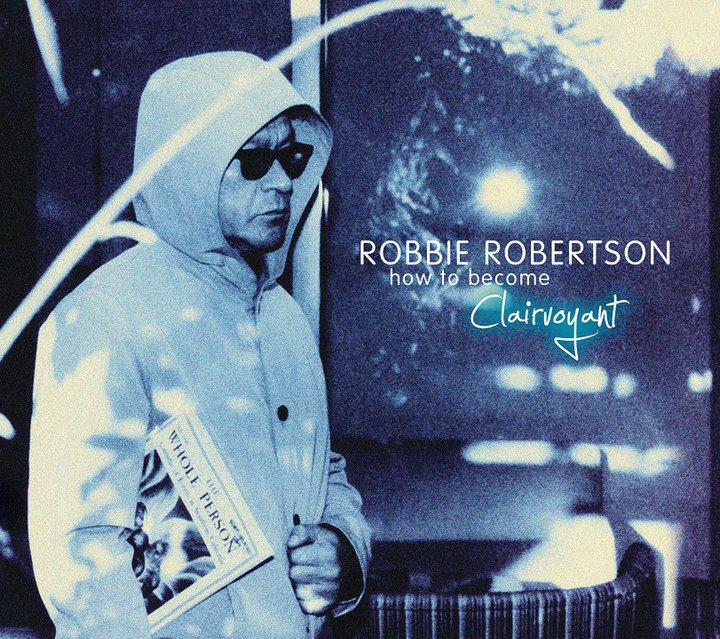Today we’re going to talk about “melodic rhythm”; it’s used in Robbie Robertson’s song “Broken Arrow.”
 “Broken Arrow”
“Broken Arrow”
by Robbie Robertson
Videos by American Songwriter
Today we’re going to talk about “melodic rhythm”; it’s used in Robbie Robertson’s song “Broken Arrow.”
It’s always been amazing to me that all of Western music comes from only 12 notes. That’s it, that’s all you’ve got. From Mozart to Metallica, it’s all those 12 notes. Granted, some folks bend them, but the fact remains that somehow, from just 12 notes, we get all of the music that has roots in Europe. And what’s even more amazing is that most of this music is made from only seven of these 12. Each complete major scale (and the related minor scales) is made up of only seven notes.
So how is it that we don’t have just a few melodies? I mean, how many ways can you arrange 12 notes (or just seven) into a melody? A lot, it turns out.
First of all, even though we have only seven notes in most songs or compositions, each note can be played or sung in different octaves. For example, the first two notes of the song “Over the Rainbow” are the same (i.e. the same letter) but they’re sung an octave apart. Try it. Sing the first word of the line “Somewhere over the rainbow.” I’ll give you a moment. The note for “some” is the same as the note for “where,” only they’re an octave apart. So one way we get variety is by using the same notes in different octaves. The letter is the same. The pitch is different.
Another reason there is such variety in music is mathematical. Leaving aside different octaves for a moment, you have a choice of seven notes to start your melody. The second note can be-at a minimum-any of the seven different notes in that key. So, there are 49 unique two-note combinations to start your melody with. And you have seven times seven times seven or 343 different, unique combinations for a three-note melody. And as you add more notes to your melody, the possibilities grow exponentially! Not all these combinations will sound fantastic, but they all exist.
Faced with so many possibilities for his melody, Robbie Robertson made some interesting choices to generate a powerful melody for “Broken Arrow.” For the first seven notes of the chorus, he uses the exact same note! He’s got lots of possibilities but he chose to stay right where he was! The shape or contour of this part of the melody is completely flat.
Now in theory, it seems like a flat melody would be boring. But keeping a melody flat does a number of things. For one, there’s a sense of consistency, solidity and strength, and there’s emphasis. In the case of this song, the repetition has a feeling of urgency, of the same message being repeated over and over. And, in fact, the melody is emphasizing the urgency of the lyrics:
Who else is gonna bring you a broken arrow?
Who else is gonna bring you a bottle of rain?
Robertson is showing just how strongly he feels about these questions and how important they are by the power of melodic repetition.
And he uses two techniques to make this flat melody interesting. First, he doesn’t place all the notes on the beat. Put another way, if you were clapping along with the song, he doesn’t sing all the notes when you’re clapping-he fills in between the claps. He syncopates the rhythm of the melody.
Second, he didn’t sing just any note. He chose the fifth note in the key, a note which-because of the music Westerners are accustomed to hearing-has a very tension-filled sound. Check it out. If you can sing do-re-mi-fa and so on, you can hear the fifth note. Just pick any pitch and call it “do.” The fifth note you sing is sol.
So Robertson created a beautiful and haunting melody in part just by varying the rhythm of the notes. As an exercise, pick a melody you’ve written (or one you love) and take keen notice of the rhythm. Clap along and notice where the notes fall. Then, try changing the rhythm of the notes and see what happens.
Another great exercise is as follows: sing a melody and notice its shape. Is it flat like Holland? Does it go up and down quickly like Switzerland? Or is it more of a gently sloping sonic landscape like water swells in the azure waters off the coast of the Bay Islands of Honduras? (Oops, just got caught up in a travel fantasy for just a moment.)
Have fun and listen deeply. Melodic rhythm isn’t a rule; it’s just a tool to help melodies reach people more powerfully.
“The Song Analyst is featured every week on Art of the Song Creativity Radio. For more info and streaming audio, visit www.artofthesong.org.”
Copyright © 2007 Michael Shorr, Taos, NM
All rights reserved.













Leave a Reply
Only members can comment. Become a member. Already a member? Log in.